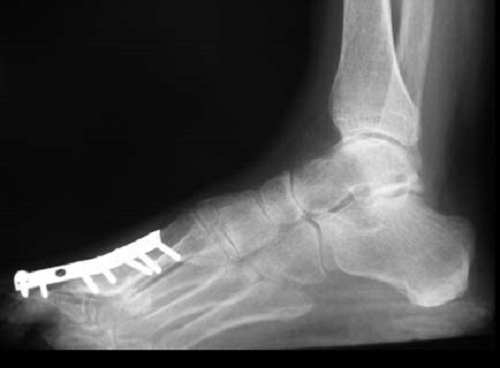The Mirror's Health , Lifestyle and Fashion

Signs of fused foot bones
Everyone engages in these basic activities at one point or the other successfully due to the functional abilities of the foot. Some individuals however have their foot bones joined, a condition known as Tarsal Coalition.
Advertisement
The condition may affect both feet and involves the fusion of two or more foot bones. Such individuals may realise that their feet are stiff, with no arch in the middle of the foot.
The condition is present at birth but noticed later in childhood, adolescence or in adulthood.
The foot
Your foot comprises many bones and can be grouped into three components or parts – hind, mid and forefoot- with the bones at the back of the foot involved in the condition.
These bones work together to ensure a specific level of movements in the foot. The bones also support the foot arch and assists with balance in standing, walking or running.
The bones also allow an even distribution of your weight in the foot during those activities. Limited movements are allowed in each foot whenever you walk or run.
These movements ensure that you are able to carry on with your functional activities.
An individual with the condition has restrictions in foot movement with a flattening of the foot -no foot arch - and intermittent tightening in surrounding muscles of the foot.
Causes of tarsal coalition
There is no known cause for the error in separation of the foot bones during development, hence two or more bones become fused together.
As the child grows older and the bones become harder, symptoms appear.
At this stage the level of flexibility in the foot reduces as well as its ability to correctly provide support for the
These changes increase the stress in the foot as well as surrounding structures such as the muscles of the affected leg.
The discomfort associated with the condition may be exacerbated by activities such as jumping, jogging or prolonged walking or standing.
The condition may or may not be found in the parents or grandparents of affected individuals.
Individuals with this condition may also experience recurrent injuries in the affected feet and especially when they engage in sporting activities.
Signs and symptoms
Individuals may experience pain in the affected feet with limited range of movements and a difficulty in performing simple tasks such as walking in late childhood, adolescence or adulthood.
Prior to that age, there may be no symptoms present and the child or individual is able to perform basic activities – walking or running - without difficulty.
With the onset of pain, individuals may complain of deep pain around the ankle joint and the middle of the affected feet. Walking becomes painful and may range from mild to severe pain.
You may also realise that your legs become tired more easily when you walk or stand.
Individuals may also develop various injuries to the ankle joint of foot due to the structure of the affected foot. The pain or discomfort may improve with rest and increase with activities with some individuals developing a limp when they walk.
You may realise that when you stand with feet on the ground, and lift your big toe upwards, there is an absence of a foot arch in the middle of the foot.
There is a level of stiffness and stress associated with the condition which may predispose the affected individual to arthritis over time.
How is the condition diagnosed?
A thorough examination of the affected feet and ankle joints is performed, with enquiries about movement in the feet in childhood and limitations in functional activities involving the feet.
Information involving the onset and duration of symptoms is also taken.The condition varies in severity and the bones in the foot that are affected.
Investigations such as MRI or an X-ray are conducted to confirm diagnosis and rule out other conditions.




